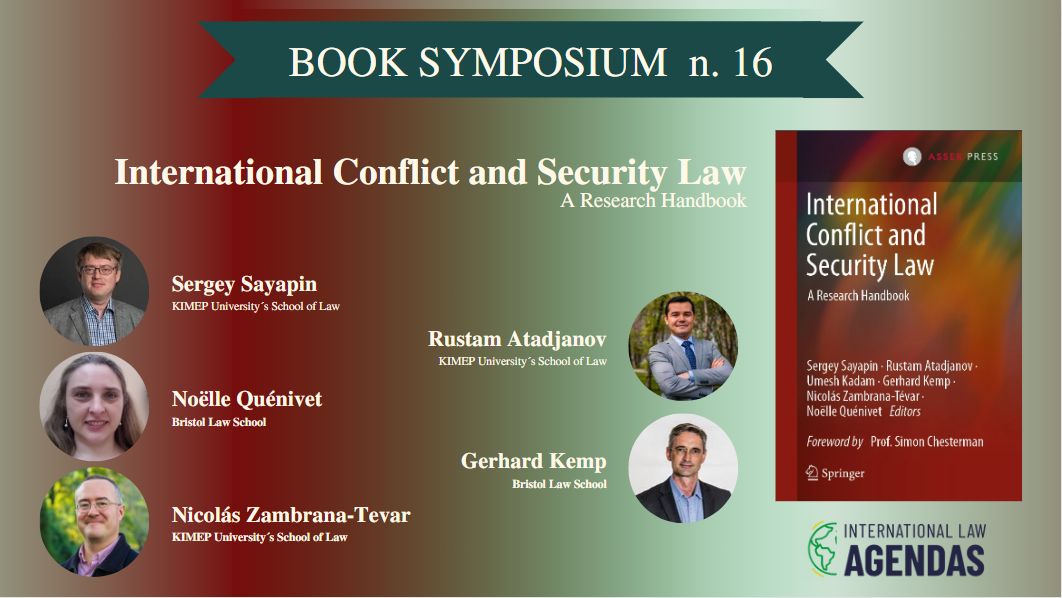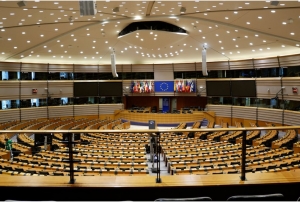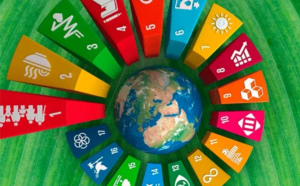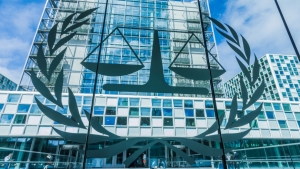Let us start by thanking colleagues at International Law Agendas, and personally Professor Lucas Lixinski, for the opportunity to hold a book review symposium on International Conflict and Security Law: A Research Handbook. We also thank our learned colleagues wholeheartedly for their insightful reviews, and will engage with some of their ideas below.
Mykola Gnatovskyy raises important questions about the very concept of the book. Why this title, which may be reminiscent of some Soviet-style courses on the “law of international security”? To what extent is the book compatible with the curricula of relevant university courses? Is the departure from the traditional distinction between the jus ad bellum and jus in bello to ensure a broader thematic coverage justified? Indeed, these and other related questions preoccupied the editors both at the beginning of the work on this ambitious project, and towards the end of this process, when all draft chapters were submitted, and the editors had to organize them into a coherent whole. The question about the title is probably the easiest one – as noted in the Preface, our book is not the first title on the subject (cf. the volumes by Burchill et al, White, White and Henderson, and others), and we decided not to “reinvent the wheel”. By contrast, as far as substance is concerned, we decided to attempt going somewhat further than our learned predecessors had done, and to place the law in its philosophical, political, and institutional contexts – that is, to discuss some of the values underlying the rules of law, challenges to their application, and the role played by various governmental and non-governmental institutions in ensuring compliance with the relevant rules of law. We thought the resulting volume was quite impressive, and thank Mykola Gnatovskyy for kindly endorsing it as a “remarkable achievement”.
In her positive review of the book, Karen da Costa provides an answer to the following question: What is the added value of this initiative, i.e., an overview of international conflict and security law in the form of a two-volume research handbook? After analyzing five chapters in Part I on protected values and briefly mentioning two more chapters from other parts, the reviewer concludes that the edited book represents a great contribution to those interested in legal aspects of conflict and security, praising it as a true and noteworthy achievement. The reviewer first stresses two positive aspects of the research handbook. The first one would be the topical relevance of each assigned chapter to international conflict and security law noting in this respect chapters of Part I. The second aspect is diversity: according to Karen da Costa, by combining multiple perspectives and experiences the book offers a rich account of various topics and provides truly thought-provoking material. The review subsequently delves into considering the five chapters on protected values: on humanity (Chapter 1), self-determination of peoples (Chapter 2), the international rule of law (Chapter 3), the common heritage of mankind (Chapter 4), and human rights between universalism and relativism (Chapter 5). While this part of the review does at times appear to provide somewhat uneven coverage – some chapters are reviewed in a more descriptive way with others being treated more analytically, in general, the reviewer manages to deliver a rather comprehensive, clear, sufficiently detailed as well as practical overview of Part I.
Sébastien Lafrance focuses his review on two chapters (by Boris Kashnikov and Elizabeth Chadwick) on the concept of self-determination. He notes that self-determination and security are intermeshed. First, the right to self-determination gives theoretically every people the right to become a State and so challenges the peace. Second, provided it is accepted that a people has such a right, it is treated in relation to the use of force differently from other groups. As Sébastien Lafrance correctly recognises, historically and fundamentally, this right is linked to the concept of sovereignty. Yet, neither he nor the book contributors devote much attention to this recent trend to claim a right to external self-determination solely based on the will of the people. Probably, this is so because prima facie there is no security issue. Although referenda are tests to express the wishes of the population for secession (Opinion 4, Badinter Commission) and “independence and secession […] may only be achieved through a lawful and peaceful process based on the democratic support of the inhabitants of such territory […]” (emphasis added), a referendum ‘is not a sufficient condition under international law’. Yet, the right to secession by choice, as discussed by Bruno Coppieters and hinted at by Marc Weller, is however increasingly brandished by States (e.g., Russia in relation to Crimea, the DPR and LPR) and sub-State entities (e.g., Scotland). Whilst, some referenda are used to mask territorial expansion (at 44), others might be democratic attempts unlikely to turn into security problems. However, we probably ought not to advocate for referenda being the sole determinator of a right to self-determination, unless we want to engage in the impossible task of assessing the democratic level of a State.
Windell Nortje’s constructive review highlights a number of the book’s themes that have relevance for a variety of disciplines, especially, in this instance, international criminal law, transitional justice, anti-corruption law, and children’s rights. Windell Nortje points out that it is often the case that crimes like corruption constitute a root cause of state failure, which in turn can lead to conflict and other threats to security. Indeed, the symbiotic nature of the crimes discussed in this book is something that needs even further interrogation and analysis. Windell Nortje mentions another important aspect in relation to the chapter on the crime of apartheid, namely the fact that paradigmatic cases (like apartheid in South Africa) often morph into crimes of international concern, thus illustrating the universality of the values protected by the criminalisation of the phenomena discussed in this book. It also illustrates the value of interdisciplinarity. It should be noted that as far as the apartheid chapter is concerned the approach for the first edition was to focus on the South African case study, but in subsequent editions other (emerging) case studies (such as Israel/Palestine, North-Korea, and others) as well as updates regarding possible prosecutions in South Africa and elsewhere will be fully analysed. It is of course the case that a book on conflict and security must by its nature contend with dynamics in international affairs and indeed, the environment. Windell Nortje points out that the natural environment and the climate serve as protective interests, but also causes of conflict, in the context of conflict and security law. We agree that this is a complex area which warrants further and nuanced research.
Martha Bradley’s very positive review highlights certain challenges to which she says previous works in this area of law had not paid as much attention. One of them is environmental damage in conflict situations and the ICRC’s 2019 report addressing the problem. Another is the law of non-international armed conflicts, with a focus on Africa. The reviewer praises the effort made by Muhammad-Basheer A. Ismail to properly classify the current conflict in Nigeria as a non-international conflict and not just involving terrorism, in order to apply the corresponding municipal or international norms. Martha Bradley further salutes the use of Islamic law and the concept of jihad to contribute to this classification. The attempt to understand the Islamic law of war in this context will help to avoid IHL being perceived as a Western imposition and to facilitate its respect and application. She comments on the chapter on war crimes and agrees that the relationship between IHL and ICL is described in such a way that ICL, rather than being an “auxiliary science of IHL” (Sassóli 2019 at 9.57), enforces or clarifies rules of IHL. In this regard, the reviewer underlines the balanced approach of the authors of the handbook in their treatment of both branches of international law. Martha Bradley also praises the classification made of war crimes, as well as the clear distinction between victims and perpetrators in international and non-international conflicts.
To conclude, we hope our book will add to the understanding of international conflict and security law as a universal and comprehensive discipline – indeed, one which is indispensable to the survival and progress of humankind. Some rules within the discipline – for example, those pertaining to cyberspace or to the protection of the environment – will continue developing rather quickly, whereas others – such as the jus cogens prohibition on the use of force – should remain conservative, for the sake of a better world with fewer conflicts and more security. We hope that our book will offer useful perspectives on some lessons of the past and present, and contribute to shaping the professional conscience of some politicians of the future – who are attending universities today – so that they deter at least some wars, and alleviate the suffering of at least some of their victims.
-

Sergey Sayapin LLB, LLM, Dr. iur., PhD [s.sayapin@kimep.kz] is Professor at KIMEP University´s School of Law (Almaty, Kazakhstan).
-

Rustam Atadjanov is Associate Professor and Associate Dean at KIMEP University´s School of Law (Almaty, Kazakhstan).
-

Noëlle Quénivet is Professor at Bristol Law School, University of the West of England, Bristol, United Kingdom.
-

Gerhard Kemp is Professor at Bristol Law School, University of the West of England, Bristol, United Kingdom.
-

Nicolás Zambrana-Tevar is Associate Professor at KIMEP University´s School of Law (Almaty, Kazakhstan).





